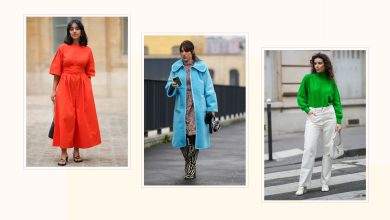
Can masks really be fashion?
In Switzerland it is not yet compulsory like in our neighboring countries Italy, Austria and Germany, but the face mask is probably the most discussed “accessory” right now. Because face masks are no longer just protection, but also a fashion statement. Which is actually almost a bit sad. Well, more and more designers have embraced the making of this face cover. Finally, there is also demand.
At first it was mainly the big fashion houses like Prada, Saint Laurent or H&M who made headlines with face masks that they produced for medical staff. But now there are also many designers who make face masks for everyday use. For some of these fashion masks you have to dig deep into your wallet. For example, Off-White’s masks were sometimes traded at over $ 1,000 until the online fashion company Farfetch stopped selling these overpriced masks. fashion face mask
Necessity over profit
Swiss designers are also sewing new masks. For example, the Zurich designer Nina Yuun. “In my home country South Korea, wearing a face mask has become the norm. You are considered selfish if you leave the house without a mask, ”says the young designer, who started making masks in mid-March. “My family was very concerned that I wasn’t wearing a mask here. And I found out that even cotton masks offer a certain protection or at least protect others from infection if you are sick yourself. “
She therefore began to make masks for her environment from the fabric remnants of her collections. First as a DIY kit, but there was great demand from friends of friends for ready-made masks.
Yuun is very critical of the fact that profit can be made with such masks. “In these times, face masks shouldn’t be something you can make a profit out of, but rather a medium that reminds people to stand together, support one another and take care of one another,” says Yuun. She has therefore decided to sell the masks either at the production price or with an optional surcharge that will be donated to the Children’s Hospital Zurich.
The Swiss label Collective Swallow has also recently started producing face masks. “We started because there were no affordable masks available and we had the material, the skills and the machines on hand,” says Anais Marti, one half of the Basel design duo.
You need around 30 minutes to sew a mask. The demand is high, meanwhile they are also making personalized masks for Swiss SMEs. They too see a great need in this: “We want to help make affordable masks easily available. That’s why our masks only cost 15 francs. “
Read also: 10 best graduation gifts Save the Student
Quality label for textile masks
How well masks made of normal textiles such as cotton provide protection has not been conclusively clarified. Depending on the textiles, filters and membranes used, they offer more or less protection. The federal government is therefore working with the Empa materials testing institute and the Swiss Textile Association on a recommendation and corresponding test procedure for textile masks.
“You will find a rapidly growing range of all types of textile masks on the market, but many are unlikely to be effective if only normal textile is used,” said Brigardier Markus Näf, the procurement coordinator of the Department of Defense, Civil Protection and Sport (VBS). on Monday at the federal media conference. The European standard for surgical hygiene masks cannot be achieved with normal textiles.
Such textile masks could play an important role in the future, because they protect other people above all by catching droplets by coughing, sneezing or speaking. “Textile masks are an important factor in supplying the population with masks, because only washable, reusable masks can guarantee the amount for the population,” says Näf.
The wearing of masks for the general public is now recommended during rush hours on public transport, which will be more popular again from next Monday. In addition, most hairdressing and beauty salons that have reopened last Monday, require a mask for employees and customers. “A washable textile mask can replace up to 50 disposable masks,” explains Näf. And the advantage is that these can also be produced by the local textile industry.
Does the fashion mask have a future?
The face mask has not only come into the focus of the fashion industry since Corona. In the past few years, masks have often been seen at fashion shows or red carpets. So far, however, these have been understood more as an allusion to air pollution or as a social statement, such as the Gucci mask that Billie Eilish wore at the Grammy Awards in January.
But never before has face protection been worn by so many people. Veiled faces will become the new normal in many places in the near future. In many densely populated countries in East Asia, wearing a mask is considered normal, ”says Nina Yuun. She doubts that face masks will become an accessory in Europe in the long term. It has a negative connotation, almost as if it were a suppression of freedom, ”says Yuun.
Anais Marti of Collective Swallow, on the other hand, believes that face masks will be permanently visible in at least certain areas. “I can well imagine that masks for certain activities will now become normal in Switzerland too,” says Marti. “And with a little color and joy, the unfamiliar face covering can be deprived of its frightening effect.”




